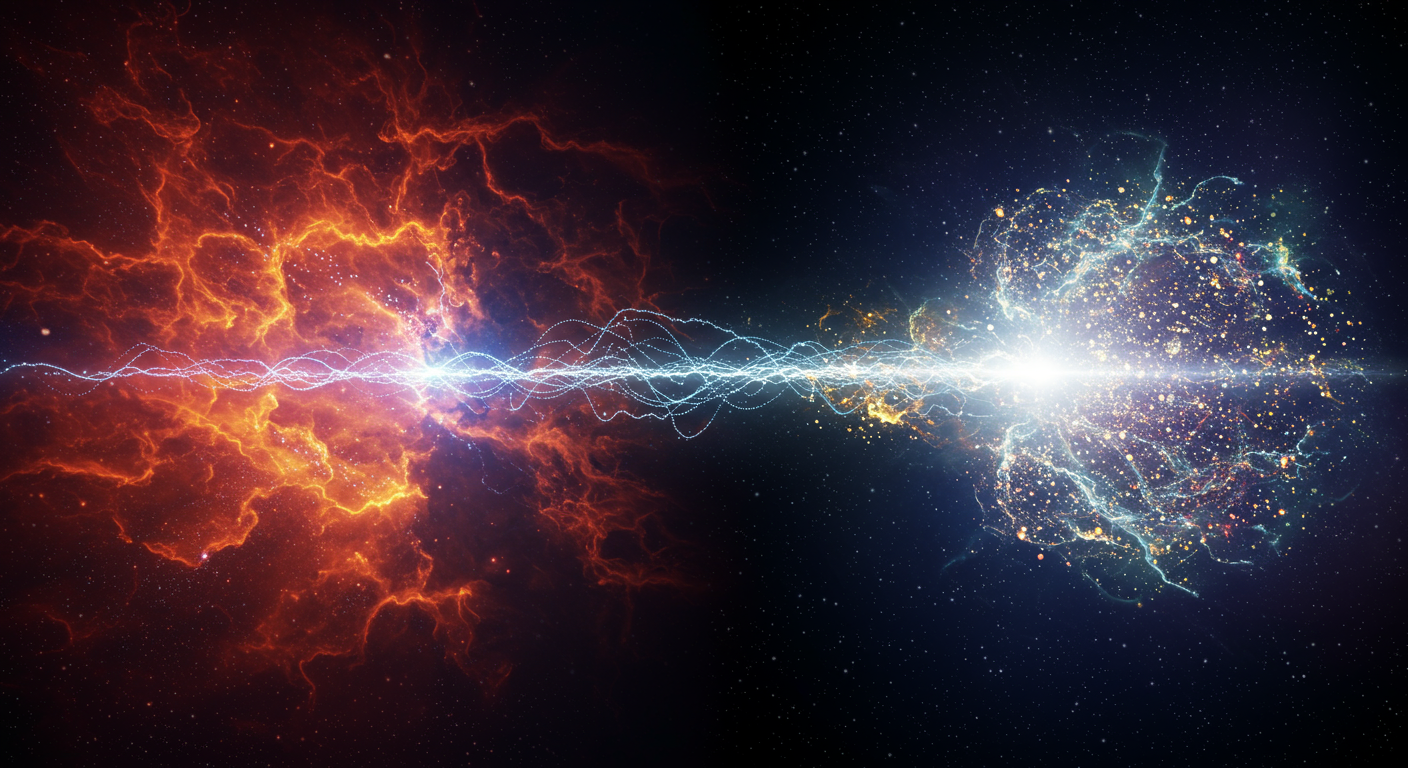Simulation-Based Inference of the sky-averaged 21-cm signal from CD-EoR with REACH

Unveiling the secrets of the Cosmic Dawn and the Epoch of Reionization (EoR) through the faint, redshifted 21-cm signal is one of the paramount challenges in modern cosmology. This signal promises a direct window into the formation of the first stars and galaxies. However, its detection is notoriously difficult, primarily because the cosmological signal is buried under astrophysical foregrounds that are four to six orders of magnitude brighter. In our new paper, a significant step forward in tackling this challenge is presented in “Simulation-Based Inference of the sky-averaged 21-cm signal from CD-EoR with REACH” (2403.14618), led by [Anchal Saxena].
The core problem lies in the immense complexity of the data analysis. A successful extraction of the 21-cm signal requires meticulously modelling not only the signal itself but also the overwhelming foregrounds, the intricate effects of the instrument’s beam, ionospheric distortions, and receiver noise. Traditional Bayesian methods, which rely on explicit likelihood calculations, become computationally prohibitive when faced with such a high-dimensional and intricate parameter space. This computational bottleneck often forces researchers to use simplified, non-physical models for the 21-cm signal, limiting the astrophysical insights that can be gained.
A New Paradigm: Simulation-Based Inference
This work, a collaboration including Eloy de Lera Acedo and Will Handley, pioneers the use of Simulation-Based Inference (SBI) to navigate this complex landscape. SBI represents a paradigm shift, moving away from explicit likelihoods and instead leveraging deep learning to learn the relationship between model parameters and simulated data, as reviewed in works like Cranmer, Brehmer & Louppe (2020).
Our approach employs a specific and highly efficient SBI algorithm known as Truncated Marginal Neural Ratio Estimation (TMNRE), originally detailed in Miller et al. (2021). TMNRE offers two crucial advantages:
- Marginalization: It directly estimates the posterior distribution for individual parameters (or pairs of them), avoiding the computationally expensive task of sampling the full, high-dimensional joint posterior.
- Truncation: The analysis proceeds in sequential rounds. After each round, the algorithm refines the prior parameter space, discarding regions with low posterior probability. This “truncation” focuses the simulation budget on the most plausible parameter values, leading to a highly targeted and efficient inference.
Application to the REACH Experiment
We demonstrate the power of this framework by applying it to simulated mock observations for the Radio Experiment for the Analysis of Cosmic Hydrogen (REACH), a next-generation experiment detailed in de Lera Acedo et al. (2022). For the first time, we integrate a physically motivated 21-cm signal model, generated using the ARES code, directly into the inference pipeline. Our simulations incorporate:
- Beam-weighted foregrounds: A realistic sky model convolved with the frequency-dependent beam of the REACH antenna.
- Physical 21-cm signal: Models generated from astrophysical parameters like X-ray heating efficiency and the minimum virial temperature of star-forming halos.
- Radiometric noise: A realistic noise component added to the simulated data.
Key Findings and Future Prospects
Our results showcase the remarkable capabilities of the TMNRE framework. We successfully recovered the ground-truth parameters for both the foregrounds and the cosmological signal, using up to an order of magnitude fewer simulations than would be required by traditional likelihood-based methods.
A critical finding is the dramatic improvement in parameter constraints when maximizing the information content of the data. By simultaneously analyzing data from multiple time slices and different antenna configurations, we can effectively break the degeneracy between the spectrally-smooth foregrounds and the cosmological signal. As the sky rotates, the instrument’s beam “sees” a changing foreground, while the isotropic 21-cm signal remains constant, a strategy explored in works like Anstey et al. (2023). Our work quantifies this effect, showing that such observational strategies are essential for a robust detection.
This study serves as a powerful proof-of-concept, demonstrating that SBI can overcome the computational hurdles that have historically limited 21-cm data analysis. It paves the way for analyzing real data from REACH and future experiments with unprecedented physical fidelity, allowing us to directly connect observational data to the underlying astrophysics of the early Universe. The flexibility of this framework will be crucial for incorporating even more complex systematics and exploring new experimental designs in the quest to open a new window on the cosmos.


Content generated by gemini-2.5-pro using this prompt.
Image generated by imagen-3.0-generate-002 using this prompt.